Uncloaking blind spots in the automotive supply chain requires a continuous and collaborative strategy aimed at greater scrutiny of inventory management, transport and manufacturing processes, supported by the latest digital tools, according to Agnieszka Kubiak, senior vice-president logistics at Brose Group.
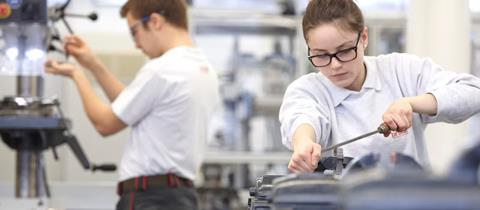
The automotive industry has learned some hard lessons since the Covid pandemic and stakeholders are looking for greater end-to-end transparency in the supply chain to anticipate and neutralise disruption. Looking for blind spots may seem like a contradiction in terms but increasing awareness of susceptible points in the inbound delivery of parts and materials supported by the use of digital tools builds resilience in vehicle manufacturing.
Agnieszka Kubiak, senior vice-president logistics at tier one mechantronics supplier Brose Group, says it is important to be aware that the blind spots the industry faces today may differ significantly tomorrow. They may also differ between companies. What may be a blind spot in one company’s supply chain might not pose a problem for another, according to Kubiak. Realising this relies on closer communication.
In Europe, the automotive sector is in a transition period and that is fraught with a lack of resources both financial and digital across various functions, according to Kubiak.
“It’s crucial to have skilled professionals who understand modern supply chains and have a strong affinity for processes and digitalisation,” she says, adding that standing still means falling behind.
There are also complex European regulatory and compliance issues that automotive stakeholders need to consider, as well as addressing trust and data security concerns.
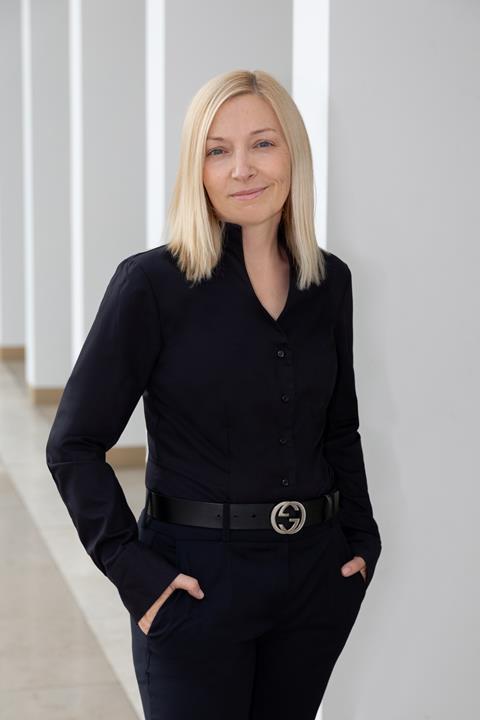
Supply chain scrutiny
While one company’s challenges may be different to another’s, the lack of comprehensive, real-time visibility across the supply chain is a prevalent problem. Kubiak says that managing inefficiencies and delays more effectively relies on closer and more consistent analysis across supply chain functions supported by technology.
“It starts with the need for enhanced monitoring, tracking and compliance with legal regulations related to transparency, right from the initial supplier and raw materials in the chain,” she says. “Moreover, our transport and manufacturing processes have their own challenges. In transportation, we are facing delays and damages in deliveries. Tracking goods can be particularly challenging, especially with rail transportation in certain countries.”
Kubiak also points to inventory management, where inaccuracies can lead to unexpected stock-outs or stock excesses. “Our production processes are not fully integrated, lacking real-time tracking and seamless connection between all production steps and machines,” she says.
Quality control is another area of concern and she points out that failures are often identified too late, sometimes only once products are in the field. There are also gaps in communication and in the interface with customers and the market.
“Inaccurate demand forecasting and insufficient collaboration with partners compound these challenges,” says Kubiak. “We navigate complex supply chains in a constantly changing environment influenced by geopolitical, economic and natural events that disrupt the entire system.” Added to which, within the system there are gaps in end-to-end information, insufficient data quality and integrity, missing compatibility and fragmented data flows.
This fragmentation comes from the fact that OEMs, tier one and two suppliers, logistics providers and other stakeholders are operating independently, which makes it difficult to develop a unified digital strategy. Kubiak acknowledges the technology exists but says widespread adoption and usage remains limited.
“Initiatives like Catena-X are introducing initial use cases for data-exchange platforms, but overall experience with these technologies is still lacking,” she says. “The pace of adoption is slow, as many European companies remain traditional and hesitant to invest in new technologies [and] for many in the industry, it’s challenging to grasp the tangible benefits of digitalisation.”
For Kubiak the key question is: what steps are needed to address these issues?
Durable digitalisation strategy
Kubiak warns that many companies continue to rely on manual processes and outdated data systems, which can significantly hinder their efficiency. Integrating new digital technologies with legacy systems is challenging. What is needed is a robust digitalisation strategy is essential today.
“Remaining stagnant in terms of technology leads to operational inefficiencies, and it’s crucial to recognise that the commitment goes beyond just initial investments; it requires ongoing improvement,” she says.
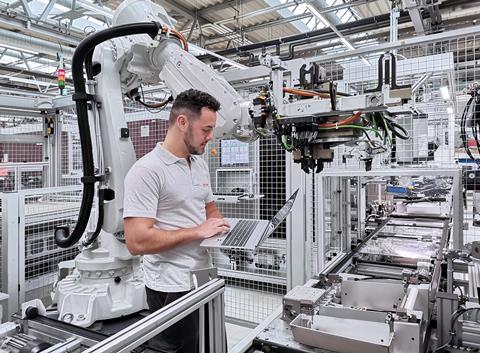
The volume of information generated in manufacturing and logistics needs to be effectively processed, analysed and presented, according to Kubiak, and this is where intelligent systems come into play.
“They enable us to perform pattern analysis and create decision-making frameworks,” she points out. “The use of simulations and scenario planning is vital. These complex processes cannot be managed manually.”
Standardised and seamless
Brose is focused on streamlining its manufacturing and logistics operations by adopting standardised systems, or at least ensuring compatibility for seamless data exchange. At the same time, it aims to enhance transparency across its entire supply chain, including external elements such as transport.
“By utilising technology for real-time tracking of components and materials, we can actively monitor their location, status, and estimated arrival times,” she says. “Moreover, we prioritise strengthening our partnerships with suppliers and customers through increased transparency, open communication and collaboration. This holistic approach not only optimises our operations but also fosters trust and efficiency throughout our supply chain.” [article continues below]
Agnieszka Kubiak will be talking more about seeing through supply chain blind spots at this year’s Automotive Logistics and Supply Chain Digital Strategies Europe conference, which takes place between December 3-4 in Munich, Germany.
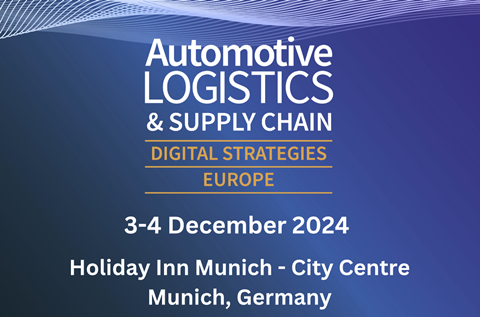
As with other tier one suppliers, Brose faces a range of external risks. There are a range of geopolitical disruptions affecting global supply chains currently along with economic downturns, and natural disasters make regular headlines, as with the recent floods in Valencia, Spain. Cyberattacks are also a top concern for vehicle and parts makers, along with their logistics providers. All of these factors are difficult to predict and control.
“Currently, I believe the best approach is to implement proactive risk management strategies, develop scenarios and create contingency plans to mitigate potential impacts,” says Kubiak.
Looking ahead, she says the future of managing these risks lies in leveraging advanced technologies. “AI-powered forecasting and machine learning will play a crucial role in predictive analytics, while digital twins can be used for simulations and scenario analysis,” says Kubiak. “Additionally, blockchain technology and collaboration platforms will enhance our ability to anticipate and respond to these external challenges effectively.”
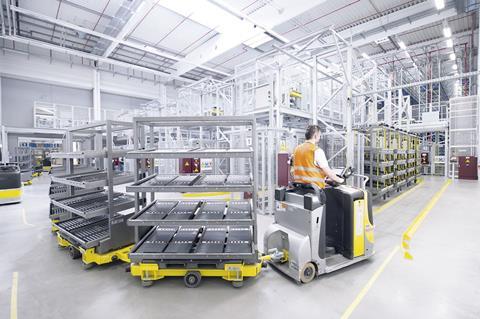
All eyes on the prize
This technology will be important in supporting the crucial strategy of collaboration and the exchange of knowledge, according to Kubiak, a strategy shared by companies to address their blind spots.
“It is essential that we recognise our limitations and engage in continuous internal analysis and process mapping,” she says. “However, limiting ourselves to our current environment isn’t sufficient. We must actively seek external insights and benchmarks.”
Kubiak says that attending events and conferences, such as Automotive Logistics and Supply Chain Digital Strategies Europe, can greatly contribute to this learning process.
“It’s critical to maintain an open mindset and avoid shutting out innovative ideas, as doing so would be detrimental,” she adds.
In addition, collaboration between companies is indispensable and that requires a proactive stance that fosters open dialogue and cooperation within the supply chain, all underpinned by legally binding agreements to ensure accountability. What is also important to Kubiak is that companies need to leverage external expertise and embrace diversity by incorporating specialists from other sectors which will enrich perspectives and strategies.
“The rapidly evolving landscape of developments presents a challenge in staying up-to-date,” she says. “It’s essential to recognise that identifying blind spots is a continuous effort. We must remain vigilant in seeking new methods to enhance our processes and integrate technologies, ensuring we are well-prepared for potential challenges. In today’s world, the pace of change is exceptionally fast, making adaptability and continuous learning crucial.”
Diversity for a new supply chain dynamic
Kubiak has worked across a range of functions from procurement to manufacturing and from plant-level to global supply chain operations management, not exclusively in the automotive sector. She says this diversity of experience has broadened her expertise and her understanding of different business environments. What she has noticed is that automotive suppliers like Brose have changed their dynamic when dealing with point and integration planning, or supply and operations planning (S&OP), areas in which other industries were ahead of automotive previously.
“Historically, [suppliers] didn’t focus much on these areas due to relatively steady demand from OEMs and a consistent upward trend,” she observes. “The main challenge often revolved around how quickly we could scale up capacity and invest in new equipment to meet this demand. That is one of the experiences that I can actively use now.”
In the consumer goods sector Kubiak recalls that it is important for suppliers to constantly assess demand and how quickly they can adjust to changes in customer buying habits. She says simulation and planning tools aren’t new, they have just been improved over time.
“During my time at the packaging company [Tetra Pak], I gained valuable experience in lean manufacturing, with a strong focus on efficiency, waste reduction and continuous improvement,” she says. “This experience has greatly influenced my approach to work. I’m constantly seeking ways to optimise processes and utilise data more effectively.”
Kubiak says she is happy working at the intersection of operations and strategic design, and that balancing the two allows her to improve current systems and anticipate future needs, enabling her to set ambitious goals.
“At Brose, this mindset is crucial,” she says. “My day-to-day business involves ongoing improvements in efficiency but also setting strategic directions. I have to focus on thinking several steps ahead to modernise the supply chain and streamline processes. This ensures we remain competitive and forward-thinking in our approach.”


























![Global[1]](https://d3n5uof8vony13.cloudfront.net/Pictures/web/a/d/s/global1_726550.svgz)




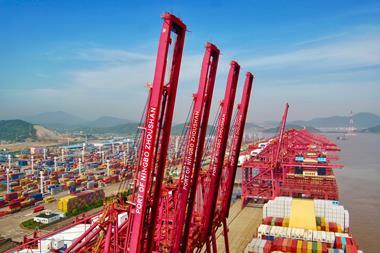








No comments yet